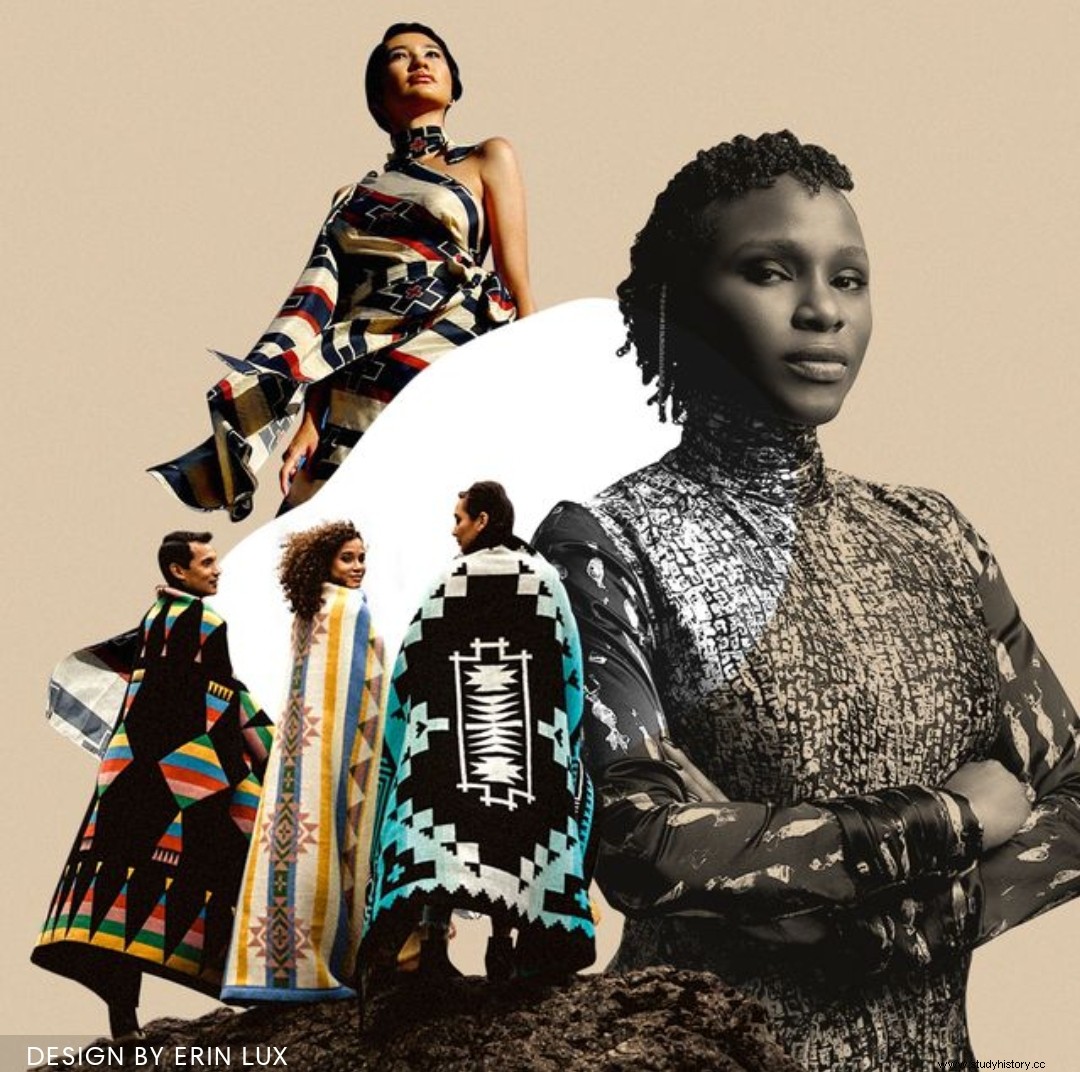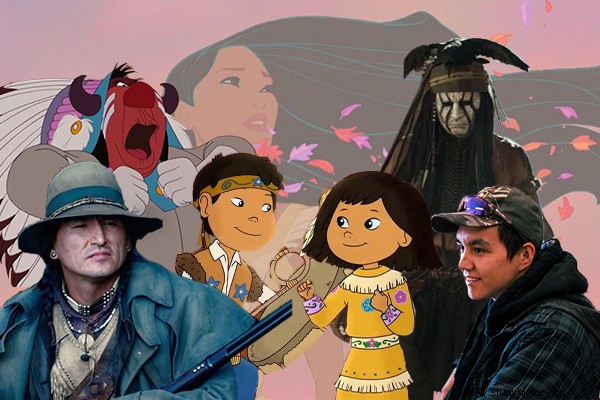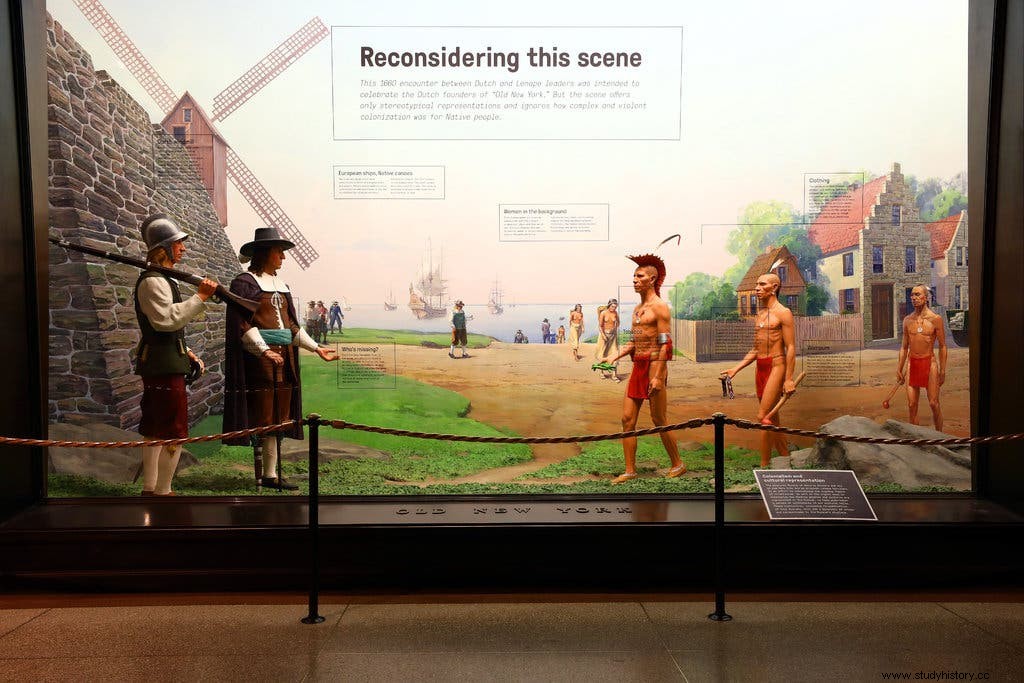Representation is revolutionary. Witnessing natives, who they are today and celebrating them, is necessary and it matters. Let's face it, Hollywood hasn't always been willing to see them or celebrate them. From its embarrassingly low levels of diverse representation across the board to its inaccurate and harmful portrayals of people of color. Especially the indigenous people. Hollywood has been complicit in the institutionalized annihilation of native peoples. Consequently, it affects how non-Native children see, think and feel about Native Americans. For too long, Native people have been erased from history, the present, and popular culture. But it doesn't have to be that way.
On Indigenous Peoples Day, and every day, Native and Indigenous peoples live, thrive and lead across the United States and the world. They contribute to all aspects of society in all 50 states. We are a living testimony to their history of resistance and resilience. Yet negative and inaccurate stereotypes and tropes, and systemic erasure, have informed wrong perceptions, attitudes and behavior towards Indigenous peoples.
Next, there is evidence to suggest that the invisibility of and toxic misconceptions about Native people create very serious biases in people and institutions that affect everything.
Specifically, Hollywood and the entertainment industry have enormous power and responsibility. While popular film and television have an enormous reach, even beyond our borders. More often, they tend to play a big role in how people understand the stories. Consequently, we empathize with important social issues and diverse communities. That is why we need to increase the authentic representation of indigenous peoples. And the inclusion of diverse storytelling in film and TV.
Indigenous representation in fashion

During New York Fashion Week in September, Gabriela Hearst new spring collection 2022 stood out for its inclusive presentation. Initially, Hearst collaborated with two Navajo weavers, Naiomi Glasses and TahNibaa Naataanii, to create some of her new woven dresses and trenches. But she's also cast an amazing lineup of Indigenous models to walk the show, including Quannah Chasinghorse, Celeste Romero, and Valentine Alvarez. The indigenous representation was not lost on the many fresh new faces behind the stage.
“I have never seen indigenous people on billboards or at fashion week. Representing major commercial brands,”
- says Cherokee Jack, an Aniyunwiya model who walked the runway. And held back tears after the show.
"Now children on the road, and even indigenous people in the city, can see and see that it is possible."
Aside from Hearst, this past fashion month overall proved to be a real turning point in the industry when it comes to properly representing Native American and Mexican models. Especially at shows like Prabal Gurung and Gucci, rising Oglala Lakota model Denali White Elk. They all went hand in hand with breakout stars like, Chasinghorse, who proudly sports his traditional Yidįįłtoo facial tattoos. She has quickly emerged as one of fashion's favorite new top models.
Together, these indigenous models are slowly making a name for themselves in an industry that has long overlooked their talent. Specifically, by forming a unique support system behind the scenes.
"It's amazing to have friends who have similar experiences to you, and who are indigenous and look like you,"
- says Alvarez, who has walked for Gucci, Valentino and Chloé.
“I see myself in them and you feel that love and support. We all want each other to succeed and flourish."
Indigenous model agencies
Of course, indigenous models have always existed, especially at large events such as the annual Santa Fe Indian Market fashion show. But many fashion brands are only now getting in on the act, as companies continue to look at how they can be more inclusive. While some Native models are represented by top agencies like IMG and Ford, Indigenous modeling agencies, like Supernatural Modeling, are also making them easier to find than ever before.
Indigenous Modeling Objectives
Even better than being on the runway, however, is the chance to have a global platform. Many of these models use their social media pages to educate people about their heritage and raise awareness about issues in their communities. Chasinghorse was an environmental activist long before she started modeling. As she has become more famous, she continues to use her social media pages to shine a light on important issues affecting her people. Other models, like Jack, do the same and feel an obligation to do so.
"My mom always taught me to speak up," Jack says. "There are so many people who have never met a Native person before. It is everyone's privilege and responsibility to educate themselves, but I am in this position where I can share and tell my own experiences. I am willing to be patient with people and have the same conversation 100 times.”
He and many other models also simply want to shine a spotlight on the beauty of their culture.
"Aboriginal beauty strikes differently," he says.
Indigenous representation in film
 It is not controversial to say that Hollywood has a representation problem. For over 100 years of productions, positive and well-rounded indigenous characters have been particularly lacking in film and television. The history of Indigenous representation is long and messy, with the absence of Indigenous voices in Hollywood resulting in decades of misrepresentation. In the early years of film, westerns were the bulk of Indigenous representation on screen. In these depictions, hostile "Indians" are often in conflict or against cowboy protagonists portrayed by big names such as John Wayne. The popular genre from the early 20th century with its indigenous characters. Despite being in use as little more than bodies for wild west heroes to slaughter.
It is not controversial to say that Hollywood has a representation problem. For over 100 years of productions, positive and well-rounded indigenous characters have been particularly lacking in film and television. The history of Indigenous representation is long and messy, with the absence of Indigenous voices in Hollywood resulting in decades of misrepresentation. In the early years of film, westerns were the bulk of Indigenous representation on screen. In these depictions, hostile "Indians" are often in conflict or against cowboy protagonists portrayed by big names such as John Wayne. The popular genre from the early 20th century with its indigenous characters. Despite being in use as little more than bodies for wild west heroes to slaughter. Indigenous representation in Hollywood films
However, it didn't take long for the genre to take a turn for the better. Little Big Man , released in 1970, turned the stereotypical portrayal of indigenous people on its head. The film is often seen as a revisionist western, with indigenous characters shown sympathetically and US military forces as the villains. The film stars Canadian actor, Chief Dan George, who received an Academy Award nomination for Best Supporting Actor for the role. Revisionist westerns were popular in the 1960s and 70s, which enhanced the perspective of the "Cowboys vs. Indians" narrative.Indigenous representation in a western genre
Outside of the western genre, there was little indigenous representation in film and television for much of the 20th century. When westerns declined in popularity, it was difficult to find film and television with mention of an indigenous character. The most prominent genre outside of Westerns with indigenous characters was animation. Disney's Peter Pan contains incredibly problematic depictions of indigenous people in 1953. This has been acknowledged by the studio. Peter Pan is one of the select films that now has a non-skippable disclaimer before showing on Disney+, explaining the racist nature of certain scenes.Indigenous representation in animation
Other animated films featuring indigenous characters on screen in the 1990s and early 2000s met with a controversial response. Pocahontas, Brother Bear, and Spirit:the stallion by Cimarron all featured sympathetic indigenous representation but still relied heavily on stereotypes. Pocahontas has been criticized for misrepresenting and romanticizing the truly horrific story(Link is external) of the girl it is based on, while Brother Bear plays into Disney's unfortunate tradition of turning people of color into animals(Link is external) for most of its screen time. There has also been a significant amount of Indigenous representation in animation, with Lilo &Stitch and Moana gets a more positive response.Growth of indigenous representation in film and television
In the 2010s, Indigenous representation in film and television has grown and developed in Hollywood. The decade saw a general push for more non-white, non-straight and non-male representation. Especially in popular movies, resulting in more screen time for indigenous characters. Although there have been vast improvements in the quality of representation, there is still a long way to go. In 2015, a dozen Native American actors walked off the set(Link is external) of Netflix's satirical western The Ridiculous Six due to the script being disrespectful to indigenous people. Netflix responded to the backlash by defending the jokes as satirical, claiming the cast was "in on the joke". Some filmmakers, however, are more willing to listen. The blockbuster Wonder Woman , released in 2017, is one of the biggest films in recent history to feature an Indigenous character. Canadian actor Eugene Brave Rock plays Chief Napi, a Blackfoot demigod. Moreover, he follows the title character on her journey through Europe. The actor said he was initially concerned about his character's reliance on stereotypes, but when he approached the director with his concerns, she gave him "unprecedented" control(Link is external) of his character. This is a landmark for positive Indigenous representation in Hollywood:listening to Indigenous voices. In the third season of CBC'sAnne with an E. , a television show based on LMM Montgomery's Anne of Green Gables. Indigenous figures along with a history of residential schools. The show made sure to not only cast Indigenous actors, but seek out Indigenous screenwriters(Link is external) to bring the story to life.Problematic Indigenous representation on screen
However, not all representation in the last decade has been well thought out. Netflix's Unbreakable Kimmy Schmidt has a controversial history where one of the show's leads is Lakota. Starring Jane Krakowski, the series follows a long history of Indigenous characters by non-Indigenous actors. However, the surrounding characters in the story are indigenous actors. The response to the story was both positive and negative, with some criticizing the thoughtlessness of having a white woman play an Indigenous role and others happy to see any Indigenous representation on such a large platform. While the 21st century continues to produce problematic representations of Indigenous people . It has also brought a renaissance of films made by indigenous people. Better and cheaper access to filmmaking tools available outside the exclusive gates of Hollywood has made it possible for people to take storytelling into their own hands. The result has been a myriad of complex, important stories. It shows both the joy and the pain of the indigenous people's experiences. By taking their stories into their own hands, the indigenous writers, actors, directors and producers are expanding the indigenous representation to all genres of film and television. From family drama Empire of Dirt for sports film Grizzlies , an increasing number of indigenous films are gaining recognition. In the past, over 20 films made by indigenous people have been screened. At the world-renowned Sundance Film Festival. As more and more Indigenous filmmakers break into the industry. Indigenous stories on screen will finally get the chance to be told properly.Historical inaccuracies in indigenous representation

There is a saying that "history is written by the survivors". In other words, the story is told through the lens of the person who came out on top. In terms of portrayals of Indigenous people in the media, most filmmakers and storytellers have generally been non-Indigenous, often white. So their stories are told through the lens of people who are only willing to see through a specific lens, or with a specific agenda in mind. Ignoring the details and allowing aspects of the cultures and ceremonies to change is often not noticed by many and contributes to the public's lack of knowledge about various aspects of indigenous cultures.
The most famous native character in the film is Pocahontas. It is a Disney animated film and their first animated attempt at a film about a real person. However, they changed the reality of the story to Pocahontas' life so it wasn't really about the real Pocahontas. The actual reality of Pocahontas is that she is a marriage partner to a white man, significantly older than her, and the surrounding exploitation by settler society as a "noble savage". Until she got sick and passed away. In the film, they took a more comfortable approach and made a more airy children's film, which is now an example of the romanticization of natives in the film industry.
Not only is her character a romantic, but the fictional narrative of the film draws on real personal history. It allows people to now associate this less intense, watered down story with Pocahontas. Instead of her more gruesome and real story.
the conclusion
Representation is important - but the quality of representation is more important.
Our fight for Native representation must include supporting Indigenous people and Native storytellers. Mainly to tell native stories and increase opportunities. To include Indigenous and Native creatives, characters and talent in all facets of the industry.
We must demand change and investment in Native storytellers and a concerted effort to tell authentic, accurate and contemporary stories of Native peoples. Hollywood has a long way to go.
